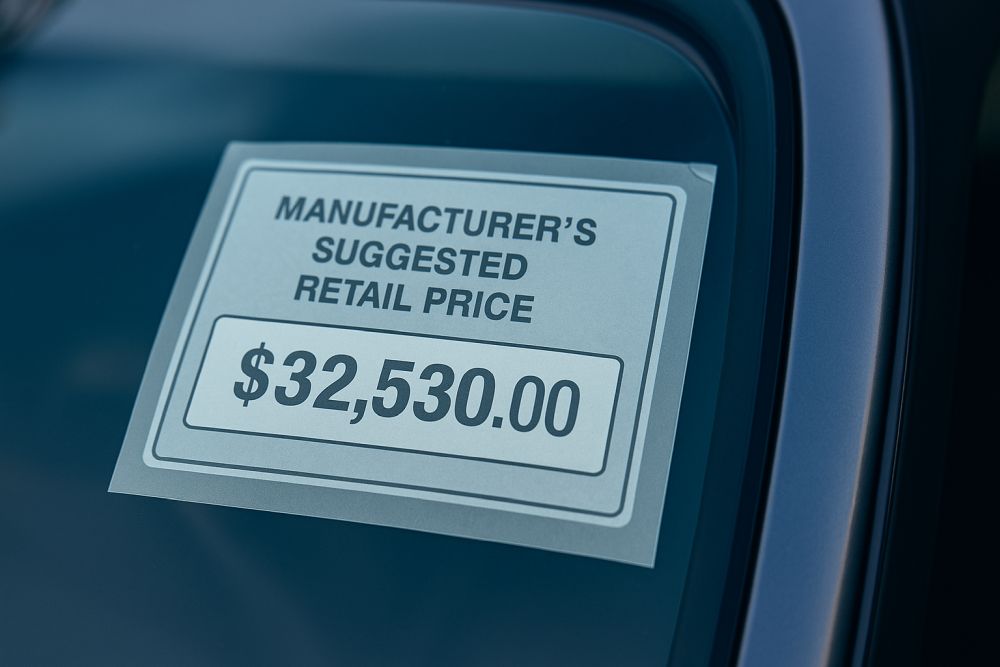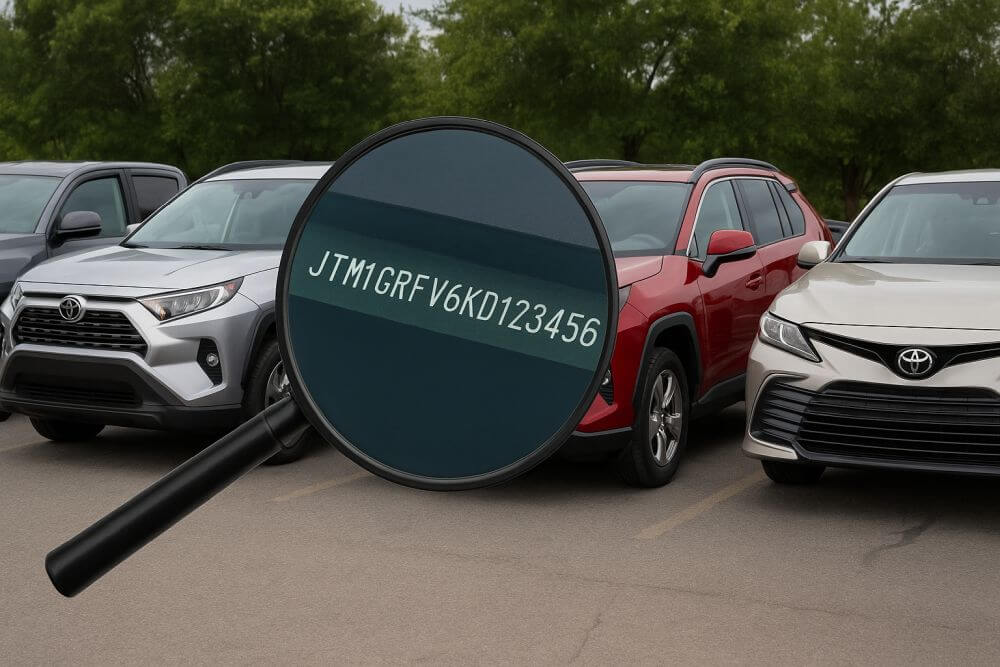If you’re buying, selling, insuring, or even budgeting for a vehicle, understanding its original Manufacturer’s Suggested Retail Price (MSRP) can reveal far more than just what it cost new. While many people focus on a car’s current market value, MSRP plays a powerful role in determining long-term value, depreciation, insurance rates, and even your negotiating leverage.

In this guide, we’ll break down what MSRP really means, why it matters for used car owners and shoppers, and how to instantly retrieve a vehicle’s factory sticker price using only the VIN.
What Is MSRP?
MSRP, or Manufacturer’s Suggested Retail Price, is the price the automaker recommends a dealership charge for a brand-new vehicle. It’s often referred to as the “sticker price” because it’s typically printed on the window sticker (Monroney label) of new vehicles.
MSRP includes the base model price and any factory-installed options or packages, but it doesn’t account for dealer markups, destination fees, or taxes.
Why Knowing the Original MSRP Still Matters
You might think MSRP is only useful when buying a new car—but in reality, it affects many areas of vehicle ownership, especially when buying used or evaluating trade-in value.
1. Depreciation and Vehicle History
Vehicles depreciate fastest in the first few years, often losing 20% to 30% of their value in year one alone.
Knowing the original MSRP gives you a baseline to understand:
- How much value the car has lost
- Whether the used price you’re seeing is fair
- How well the vehicle has held its value compared to competitors
2. Insurance Rates
Many insurance providers calculate premiums and replacement value using the vehicle’s original MSRP—not just its current resale price. Cars with higher MSRPs tend to cost more to insure, especially if they come with expensive features or safety systems.
3. Resale and Trade-in Value
Used car listings often mention original MSRP to highlight premium features or justify pricing.
Knowing MSRP can help you:
- Negotiate better during resale or trade-in
- Avoid overpaying for a vehicle with a base model price
- Highlight premium options that increase value (e.g., AWD, navigation, sport packages)
4. Loan Terms and Leasing
When financing or leasing, your payments are directly tied to the vehicle’s original MSRP.
- Leasing companies use MSRP minus residual value to calculate payments
- Lenders assess the original price to determine loan-to-value ratios
How to Find a Car’s Original MSRP by VIN
The most reliable way to uncover a vehicle’s original factory price is by running a VIN-based MSRP lookup.
Your VIN (Vehicle Identification Number) is a 17-digit code found:
- On the dashboard (driver’s side, near windshield)
- Inside the driver’s side door jamb
- On the title, insurance card, or registration
Once you have the VIN, go to:
https://www.vincheckpro.com/msrp-lookup-by-vin/
Here you can run a free MSRP lookup by VIN to reveal:
- Factory base MSRP
- Optional packages and their cost
- Original equipment and trim level
- Exterior and interior color
- Technology and safety features
Find factory pricing fast with our free VIN-based MSRP tool
What Can Original MSRP Tell You About a Used Car?
Let’s say you’re comparing two 2019 SUVs:
- SUV A: Selling for $27,000, original MSRP was $29,500
- SUV B: Selling for $25,000, original MSRP was $34,000
Without knowing the MSRP, you might assume SUV A is a better value. But SUV B may have included advanced tech packages, AWD, premium interior, or towing capabilities—making it a better buy for the price.
Original MSRP can help you:
- Spot overvalued base models
- Identify underpriced premium trims
- Avoid paying luxury prices for mid-tier specs
How Dealers Use MSRP to Their Advantage
Dealerships often reference MSRP in marketing to make deals sound better:
- “Save $6,000 off original MSRP!”
- “Originally priced at $42,000—now just $31,999!”
This strategy works because MSRP gives buyers a frame of reference. But without knowing what was actually included in that original price, you could be comparing apples to oranges.
By running your own VIN-based MSRP lookup, you ensure you’re working with facts—not just sales language.
Can MSRP Affect Extended Warranty Pricing?
Yes. Just like insurance rates, extended warranty plans may be priced based on:
- Original MSRP
- Equipment level
- Likelihood of costly repairs
Vehicles with higher MSRPs—even if currently valued lower—can cost more to protect due to advanced electronics or powertrain complexity.
Real-Life Scenarios Where MSRP Lookup Pays Off
Used Car Buyer
You’re shopping for a 2020 sedan and want to know if the price reflects what it cost new. By looking up the MSRP, you realize it’s the base trim with no upgrades—time to negotiate!
Truck Owner Trading In
You want to trade in your truck and the dealer is lowballing you. You show them the original MSRP with towing package and 4×4 off-road package—and get a $2,000 better offer.
DIY Mechanic
You’re ordering parts and want to be sure you’re matching the exact trim, drivetrain, and engine. Original build data ensures you order the right components the first time.
Makes and Models Supported by VIN MSRP Lookups
VinCheckPro supports MSRP lookups for most major U.S. and imported vehicles:
- Ford, Chevrolet, Dodge, Ram, GMC, Jeep
- Toyota, Honda, Nissan, Subaru, Hyundai, Kia
- BMW, Mercedes-Benz, Audi, Volvo, Lexus, Acura
Including trucks, SUVs, sedans, minivans, hybrids, and EVs going back over a decade.
Final Thoughts: MSRP Is More Than a Number
When it comes to evaluating cars—past or present—MSRP is your compass. It anchors your expectations, supports your negotiations, and tells the story of what the vehicle was originally worth.
Before you buy, trade, insure, or modify, take a moment to look up the original sticker price. It could reveal more than you think.
Find factory pricing fast with our free VIN-based MSRP tool
No login. No credit card. Just clear, VIN-based MSRP insights in seconds.


